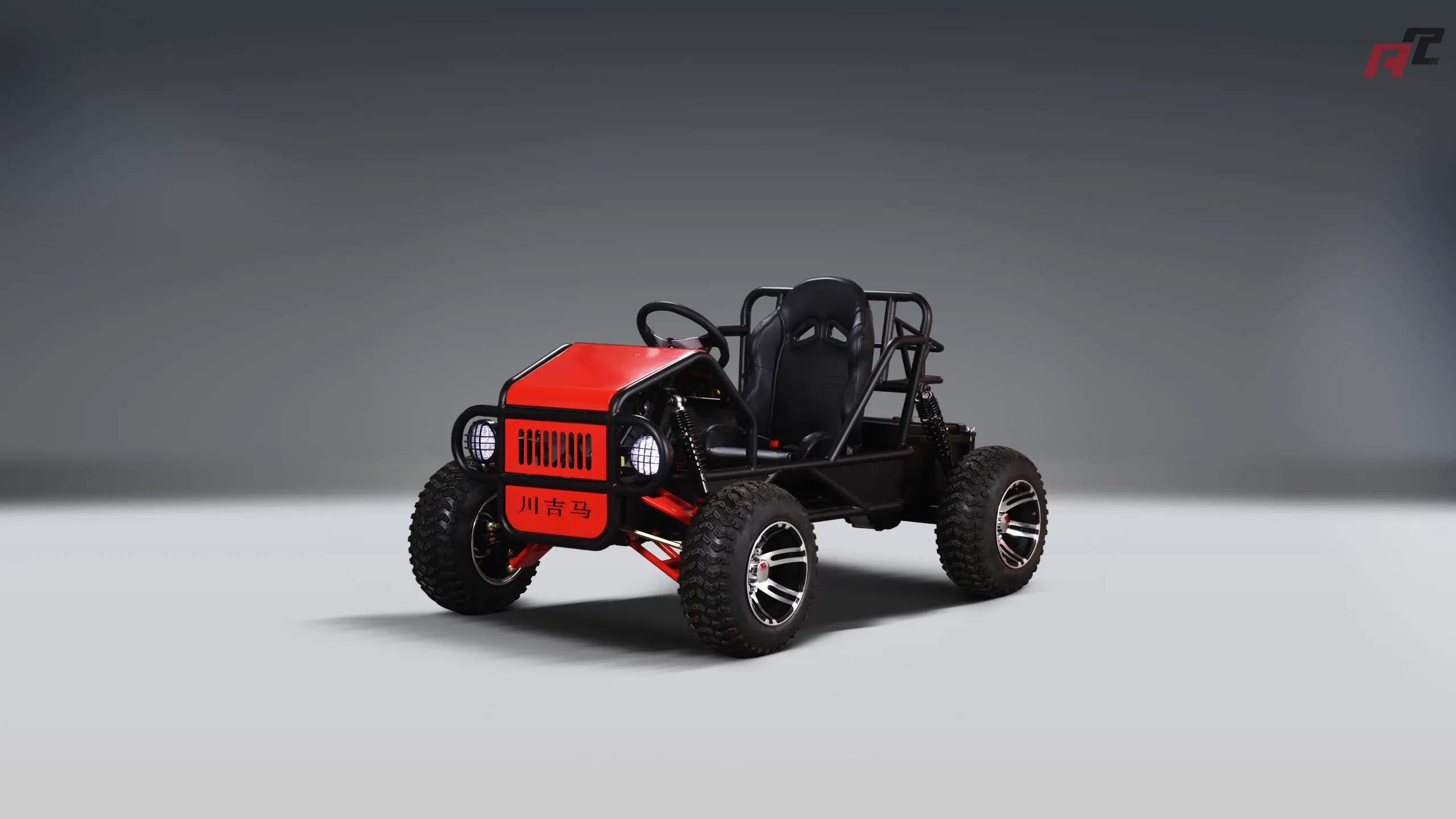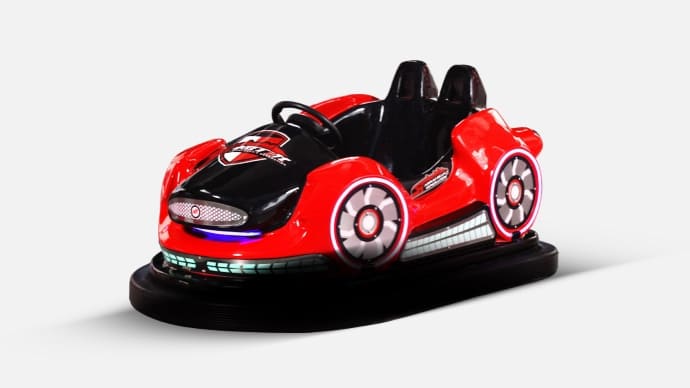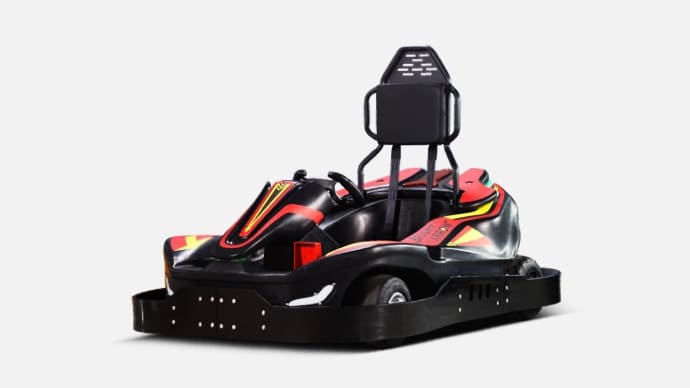Future Trends: Autonomous and Electric Bumper Cars in Parks
- Introduction: Why Autonomous and Battery Bumper Cars Matter
- Trend overview and keyword relevance
- Market Drivers: Guests, Sustainability, and Operational Efficiency
- Guest expectations and experience
- Sustainability and environmental pressure
- Operational efficiency and flexibility
- Battery Technologies for Bumper Cars: Choosing the Right Powertrain
- Overview of common battery chemistries
- Comparison: Lead-acid vs Lithium-ion vs LiFePO4
- Autonomous Technologies: What Parks Can Deploy Today
- Core sensors and systems
- Operational modes enabled by autonomy
- Safety-first implementations
- Design and Safety Standards for Autonomous Battery Bumper Cars
- Engineering best practices
- Operational safety procedures
- Maintenance, Charging Infrastructure, and Uptime
- Charging strategies and depot design
- Remote monitoring and predictive maintenance
- Business Models and ROI: How Parks Can Monetize New Features
- Revenue uplifts from novel features
- Cost considerations and payback factors
- How ANCHI Amusement Supports Parks Building Modern Battery Bumper Car Attractions
- Manufacturer capabilities and turnkey services
- Product portfolio aligned with trends
- Implementation Roadmap: From Concept to Open
- Step-by-step checklist
- Metrics to track post-launch
- Case Comparisons: Operational Examples
- Example scenarios
- Common Pitfalls and How to Avoid Them
- Underestimating charging logistics
- Skipping regulatory and safety validation
- Conclusion: Practical Steps Forward
- Summary and business next steps
- FAQ: Questions Parks and Operators Ask Most
- Q1: Are battery bumper cars safe compared to traditional wired systems?
- Q2: Which battery type is best for commercial bumper cars?
- Q3: How long do battery bumper cars run between charges?
- Q4: Can autonomous bumper cars be retrofitted into existing arenas?
- Q5: How can I get a turnkey solution and venue design?
- Q6: What are the first steps to pilot autonomous battery bumper cars?
Introduction: Why Autonomous and Battery Bumper Cars Matter
Trend overview and keyword relevance
The amusement-park guest of today expects novelty, sustainability, and a smooth guest experience. Integrating autonomous features and modern battery technologies into bumper car attractions creates quieter, cleaner, and more engaging rides. For parks and operators, choosing the right battery bumper car design directly affects uptime, maintenance costs, and guest satisfaction.
Market Drivers: Guests, Sustainability, and Operational Efficiency
Guest expectations and experience
Today's guests value interactivity and new experiences. Autonomous behaviors (such as programmable zones, AI-driven target modes, or smart choreography) combined with battery bumper cars provide fresh attractions without heavy infrastructure changes. These features support repeat visitation and higher per-guest spend.
Sustainability and environmental pressure
Battery-powered bumper cars reduce local emissions, lower noise, and align with sustainability goals that many parks now adopt. Switching from wired or fossil-fuel-based systems to modern battery systems often helps parks meet municipal or corporate sustainability targets.
Operational efficiency and flexibility
Battery bumper cars offer easier reconfiguration of layouts, faster deployment in seasonal parks, and simplified maintenance compared to tethered models. Autonomous systems can reduce staffing needs for ride control and enable dynamic capacity management during peak periods.
Battery Technologies for Bumper Cars: Choosing the Right Powertrain
Overview of common battery chemistries
Three battery chemistries are most relevant: lead-acid (including AGM), lithium-ion (NMC/NCA), and lithium iron phosphate (LiFePO4). Each has trade-offs in cost, cycle life, weight, safety, and maintenance that directly impact the total cost of ownership for battery bumper cars.
Comparison: Lead-acid vs Lithium-ion vs LiFePO4
| Characteristic | Lead-acid (AGM) | Lithium-ion (NMC/NCA) | LiFePO4 |
|---|---|---|---|
| Typical cycle life | 200–500 cycles | 500–2000 cycles | 2000–5000 cycles |
| Energy density | Low | High | Moderate |
| Safety | Good if managed; venting risk | Requires strict BMS; thermal runaways possible | Excellent thermal stability |
| Maintenance | Higher (periodic checks) | Moderate (BMS required) | Low |
| Initial cost | Low | Higher | Moderate–High |
| typical charge time | 4–8 hours | 1–6 hours (depends on charger) | 1–6 hours (fast charging supported) |
Recommendation: For commercial bumper cars, LiFePO4 often offers the best balance of safety, lifecycle cost, and performance. Lithium-ion options are attractive where weight and high energy density matter, while lead-acid remains cost-effective for low-budget or low-utilization applications.
Autonomous Technologies: What Parks Can Deploy Today
Core sensors and systems
Autonomous bumper cars rely on a mix of sensors and control systems: cameras, ultrasonic sensors, IMUs, wheel encoders, and increasingly LiDAR for precise obstacle tracking. A robust onboard controller with redundancy and a centralized fleet management system enables coordinated behaviors, geofencing, and automated safety responses.
Operational modes enabled by autonomy
Autonomous features enable new ride modes: self-driving practice lanes for children, cooperative team games where cars coordinate, or dynamic difficulty adjustments. Operators can run hybrid modes where drivers steer while an assist system prevents collisions or controls speed within safe zones — improving inclusivity and safety.
Safety-first implementations
Safety remains paramount. Autonomous bumper cars must include redundant braking systems, clearly defined geofences, emergency stop capabilities, and constant health monitoring through the fleet management platform. Regulatory compliance and third-party testing are vital before public deployment.
Design and Safety Standards for Autonomous Battery Bumper Cars
Engineering best practices
Designers should implement: battery management systems (BMS) with cell balancing and thermal monitoring; vehicle-level failsafes (mechanical braking); and intrusion-resistant enclosures for sensitive electronics. Waterproofing to an appropriate IP rating and flame-retardant materials for battery compartments add safety margins.
Operational safety procedures
Implement daily checklist inspections, enforce charging safety protocols, and provide staff training on handling battery faults and emergency stops. Documented maintenance schedules and centralized telematics that log vehicle behavior help identify issues early.
Maintenance, Charging Infrastructure, and Uptime
Charging strategies and depot design
Parks should choose an operational charging model: opportunistic charging between runs with fast chargers, or swap-and-charge battery systems for continuous operation. Depot design should include ventilation, fire suppression planning, and secure charging racks. For most commercial bumper cars, a 48V or 72V system with modular battery packs simplifies swapping and maintenance.
Remote monitoring and predictive maintenance
Telematics and cloud analytics enable condition-based maintenance: track battery health, number of cycles, and motor currents. Predictive alerts reduce unexpected downtime and minimize long-term costs, improving guest experience by maximizing availability of battery bumper car fleets.
Business Models and ROI: How Parks Can Monetize New Features
Revenue uplifts from novel features
Autonomous modes and themed battery bumper car experiences can justify High Quality pricing, season passes, or timed-entry add-ons. Variable pricing for high-demand sessions, private bookings, or branded experiences increases per-guest revenue. The reduced infrastructure of battery systems (no overhead grid rails) can lower initial civil works and speed time-to-market.
Cost considerations and payback factors
Key variables: initial vehicle cost (battery chemistry influences price), charging infrastructure cost, maintenance personnel training, and expected lifetime cycles of batteries. Choosing higher upfront battery quality (e.g., LiFePO4) usually yields better long-term economics due to longer cycle life and lower maintenance.
How ANCHI Amusement Supports Parks Building Modern Battery Bumper Car Attractions
Manufacturer capabilities and turnkey services
ANCHI Amusement is one of the leading manufacturers of amusement equipment in China and offers integrated solutions spanning bumper cars, go-karts, off-road vehicles, system R&D, production, sales, and after-sales service. With over 5,000 square meters of production space and a technical team of 30+ specialists, ANCHI provides custom battery bumper car designs, fleet management integrations, and venue design from concept to execution.
Product portfolio aligned with trends
ANCHI's offerings include inflatable bumper cars, laser battle bumper cars, drift bumper cars, and a variety of battery-powered karts suitable for different guest segments. ANCHI advises on battery choices, autonomous features, and depot layouts and can deliver tailored solutions that balance guest experience with operational efficiency. Visit https://www.anchiamusement.com/ for product details and inquiries.
Implementation Roadmap: From Concept to Open
Step-by-step checklist
1) Define attraction goals (capacity, guest profile, revenue targets). 2) Select vehicle platform and battery chemistry with supplier input. 3) Design arena and depot with safety and charging needs. 4) Integrate autonomous control systems and test in a closed environment. 5) Train operations and maintenance staff. 6) Soft-launch with monitoring and gradual feature rollouts.
Metrics to track post-launch
Track uptime, cycle counts per battery pack, average session revenue, guest satisfaction scores, incident logs, and energy costs. These KPIs guide iterative improvements and justify future investment in fleet expansion or upgraded battery systems.
Case Comparisons: Operational Examples
Example scenarios
| Scenario | Battery System | Autonomy Level | Use Case |
|---|---|---|---|
| Small family park | Lead-acid or affordable LiFePO4 | Driver assist (speed limit) | Low-cost, family-oriented rides with simple maintenance |
| Urban entertainment center | LiFePO4 modular packs | Semi-autonomous (geofence + choreographed modes) | High throughput, themed sessions, High Quality pricing |
| Theme park flagship | High-density lithium-ion or advanced LiFePO4 | Full autonomy for special shows | Show-driven attraction, scheduled performances, high guest engagement |
Common Pitfalls and How to Avoid Them
Underestimating charging logistics
Insufficient chargers or poor depot routing creates bottlenecks. Plan for peak demands and consider battery swapping if continuous operation is required.
Skipping regulatory and safety validation
Autonomous behaviors require rigorous safety testing and documentation. Engage third-party safety assessors early and implement conservative safe defaults during public operation.
Conclusion: Practical Steps Forward
Summary and business next steps
Battery bumper car technology combined with autonomous systems offers parks new creative formats, lower environmental impact, and operational flexibility. For operators, starting with a pilot fleet, selecting resilient battery chemistries (LiFePO4 recommended for many commercial uses), and partnering with experienced manufacturers like ANCHI Amusement reduces risk and accelerates deployment.
FAQ: Questions Parks and Operators Ask Most
Q1: Are battery bumper cars safe compared to traditional wired systems?
A1: Yes — when designed with a certified BMS, proper enclosure, redundant braking, and tested autonomous controls. Battery systems remove overhead rails and associated hazards but introduce charging and battery safety requirements that must be managed.
Q2: Which battery type is best for commercial bumper cars?
A2: LiFePO4 is often the best balance of cycle life, safety, and predictable total cost of ownership. High-density lithium-ion may be chosen for weight-sensitive installations, while lead-acid can be used for low-budget or low-utilization setups.
Q3: How long do battery bumper cars run between charges?
A3: Typical run times depend on battery capacity and vehicle design; practical ranges are several hours per charge under normal ride cycles. Many operators plan opportunistic charging between sessions or use battery swaps to maintain continuous operation.
Q4: Can autonomous bumper cars be retrofitted into existing arenas?
A4: In many cases, yes. Retrofitting requires assessing vehicle chassis compatibility, space for depot and chargers, integration of safety geofences, and testing. Work with a manufacturer experienced in retrofit projects to ensure safety and performance.
Q5: How can I get a turnkey solution and venue design?
A5: ANCHI Amusement offers end-to-end services from custom vehicle manufacturing to complete venue design and after-sales support. Visit https://www.anchiamusement.com/ to discuss project requirements and request a quote.
Q6: What are the first steps to pilot autonomous battery bumper cars?
A6: Define goals and KPIs, select a small pilot fleet, partner with a manufacturer for a controlled testing plan, design a safety-first test arena with clear geofences, and collect operational data to refine systems before full deployment.
Battery Bumper Car Accessories and Customization Ideas
Wholesale how to build an electric go kart manufacturer and supplier
Wholesale bumper car toys manufacturer and supplier
Wholesale go kart lithium batteries manufacturer and supplier
About Cooperation Process
What safety features are available for your customized amusement ride equipment?
Safety is paramount. We offer customizable safety features such as harness systems, emergency stop mechanisms, protective barriers, and operator controls designed to ensure rider safety and comply with industry standards. These features are tailored to enhance both guest enjoyment and operational peace of mind.
How to sign a cooperation agreement?
We will provide you with a draft cooperation agreement, which will be signed by both parties after confirmation to ensure the legality and standardization of the cooperation process.
About Logistics
How to track my order?
You can track your order through our sales manager, and learn about the logistics status and delivery progress of your order at any time.
Is your logistics and distribution service reliable?
Yes, we cooperate with a number of well-known logistics companies to ensure the timeliness and reliability of logistics and distribution services and provide you with a satisfactory distribution experience.
After Sales Support
How to contact your after-sales customer service team?
You can contact our after-sales customer service team through the contact information provided by our sales manager, and we will provide you with timely help and support.

Cyclone RS 2025 1200W Electric Go-kart for Home Entertainment Centers
The Cyclone RS 2025 is a high-performance electric ride-on car designed for thrill-seekers, entertainment centers, and commercial amusement businesses. Built with a durable ABS body and reinforced metal chassis, it combines strength, safety, and speed for a superior driving experience. With a 1200W mid-mounted motor (peaking at 3600W), advanced control system, and long-lasting 72V20AH LiFePO₄ battery, this ride ensures both powerful performance and reliability.
Whether for amusement parks, game zones, rental businesses, or personal recreational use, the Cyclone RS 2025 delivers unmatched excitement and durability.

Kids Electric Off Roads One-seater ATV
Discover adventure with the ANCHI Kids Electric One-seater ATV, the perfect electric off-road experience for young explorers. Designed for safety and performance, this electric off-road go kart for kids offers unmatched thrills on any terrain. Its durable build and easy-to-use controls ensure a fun and safe ride. Ideal for budding adventurers, this ATV promises endless excitement. Explore the world with confidence with ANCHI’s innovative electric off-road solutions for kids.

Battery Drift Bumper Car With inflatable tyre
The Battery Drift Bumper Car with Inflatable Tire with 650W steel gear motor, and high quality battery wich can becharged outside the car, the bumper car is ideal for amusement parks, family entertainment centers, build quality for safe, long-lasting fun.

Spaceship Laser Battle Bumper Car
Discover the future of fun with the ANCHI Spaceship Laser Battle Bumper Car! Designed for thrill-seekers, this kids bumper car offers an exhilarating laser battle experience. Parents and children alike will enjoy hours of safe, exciting play. Ideal for parties or everyday fun, it combines durability with innovative technology.










